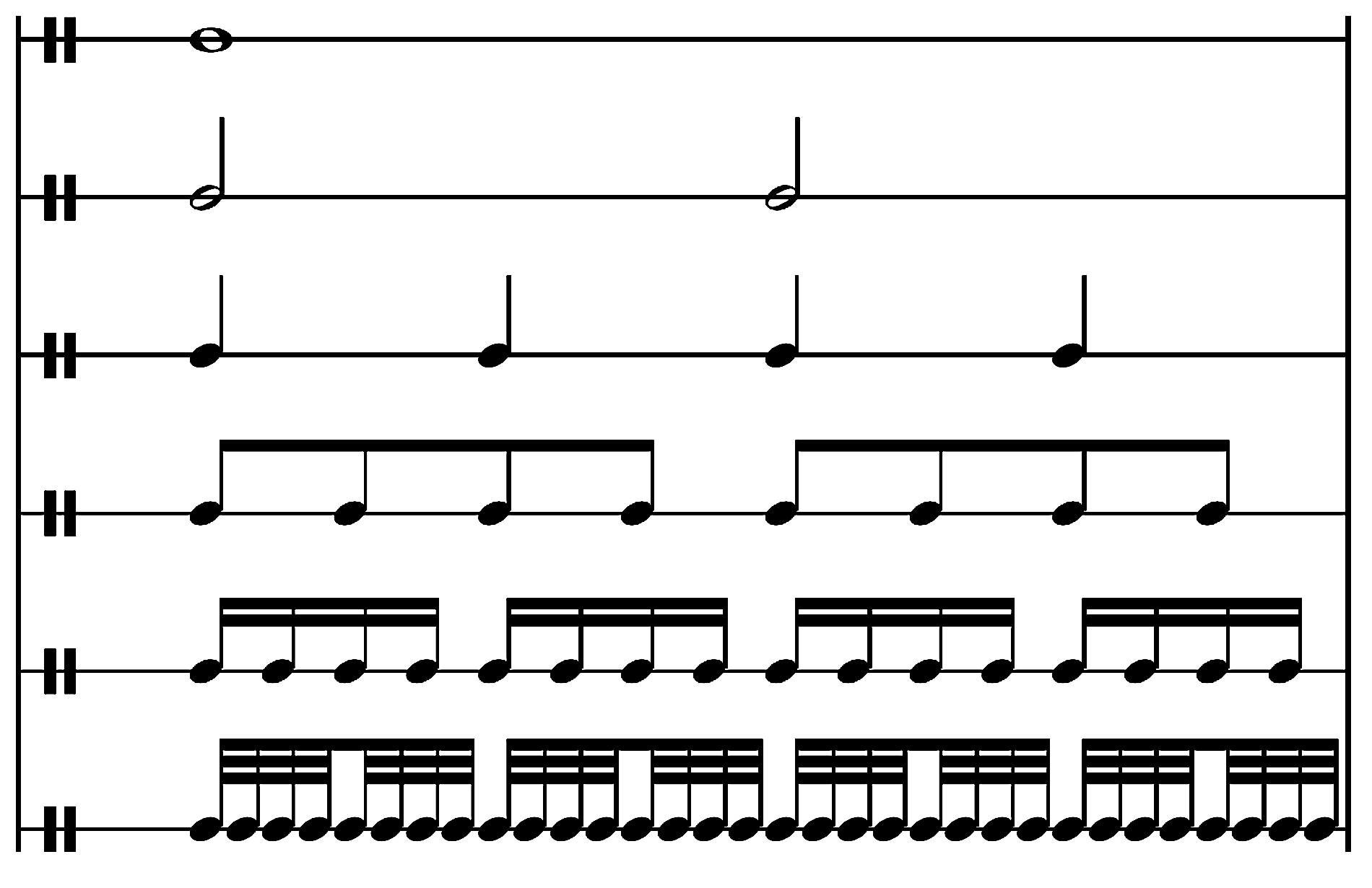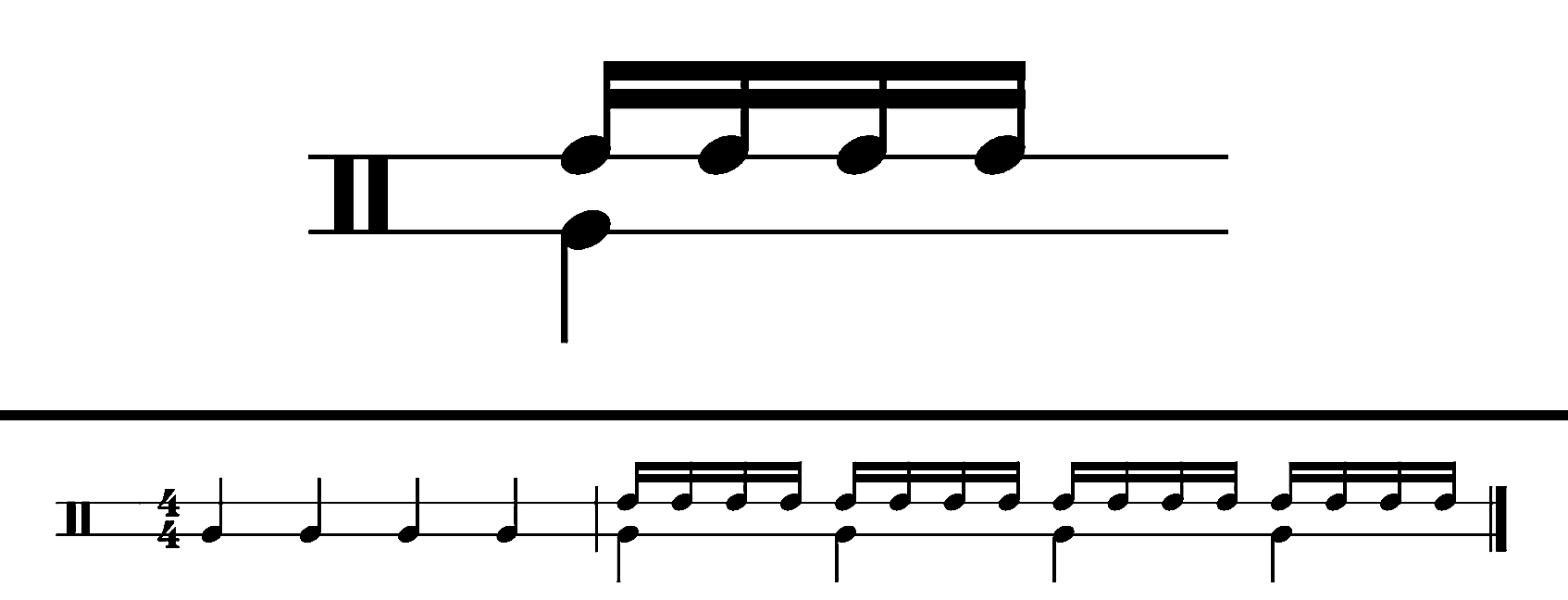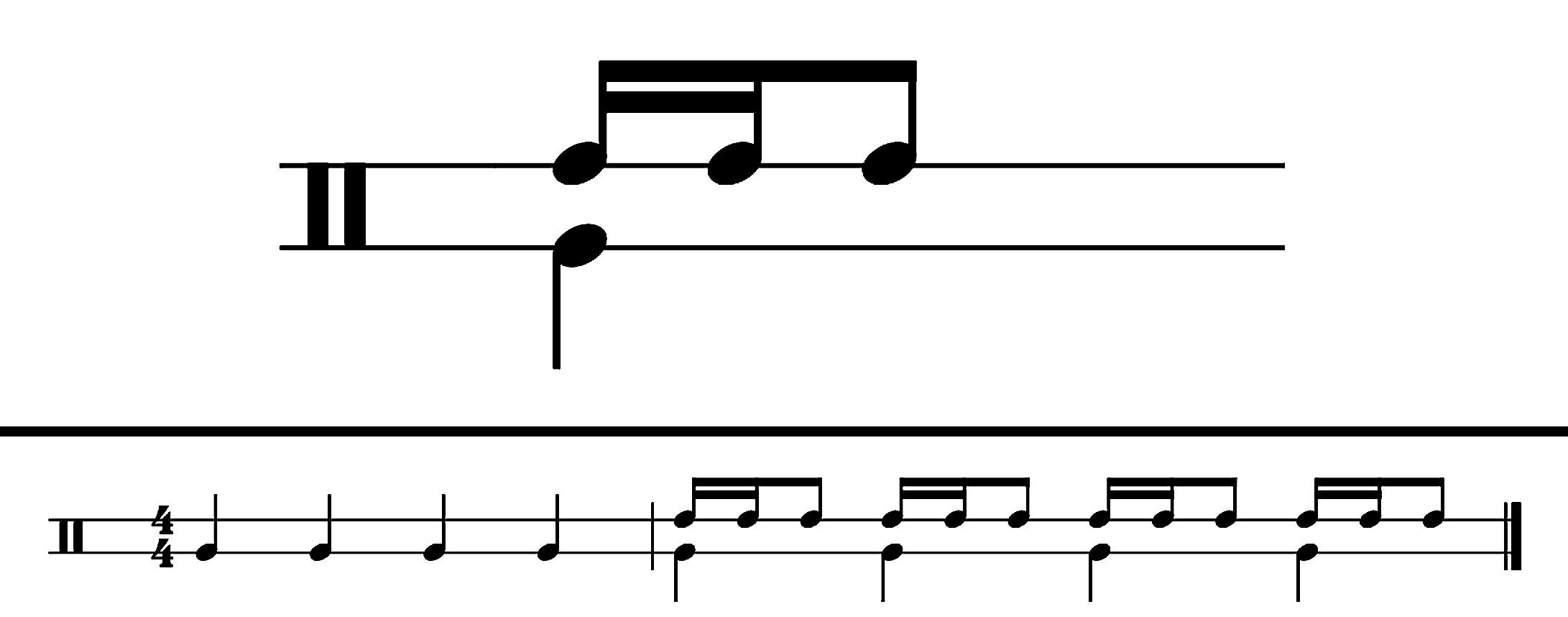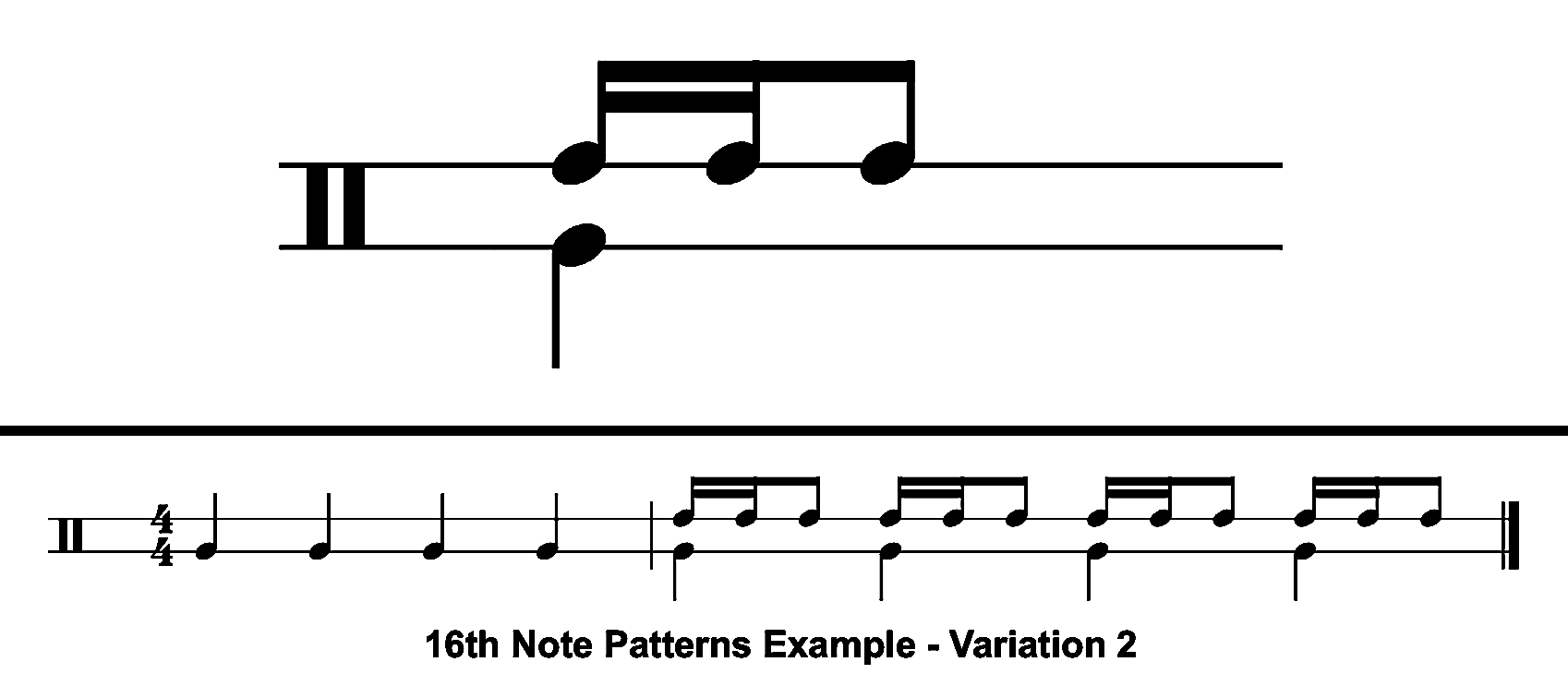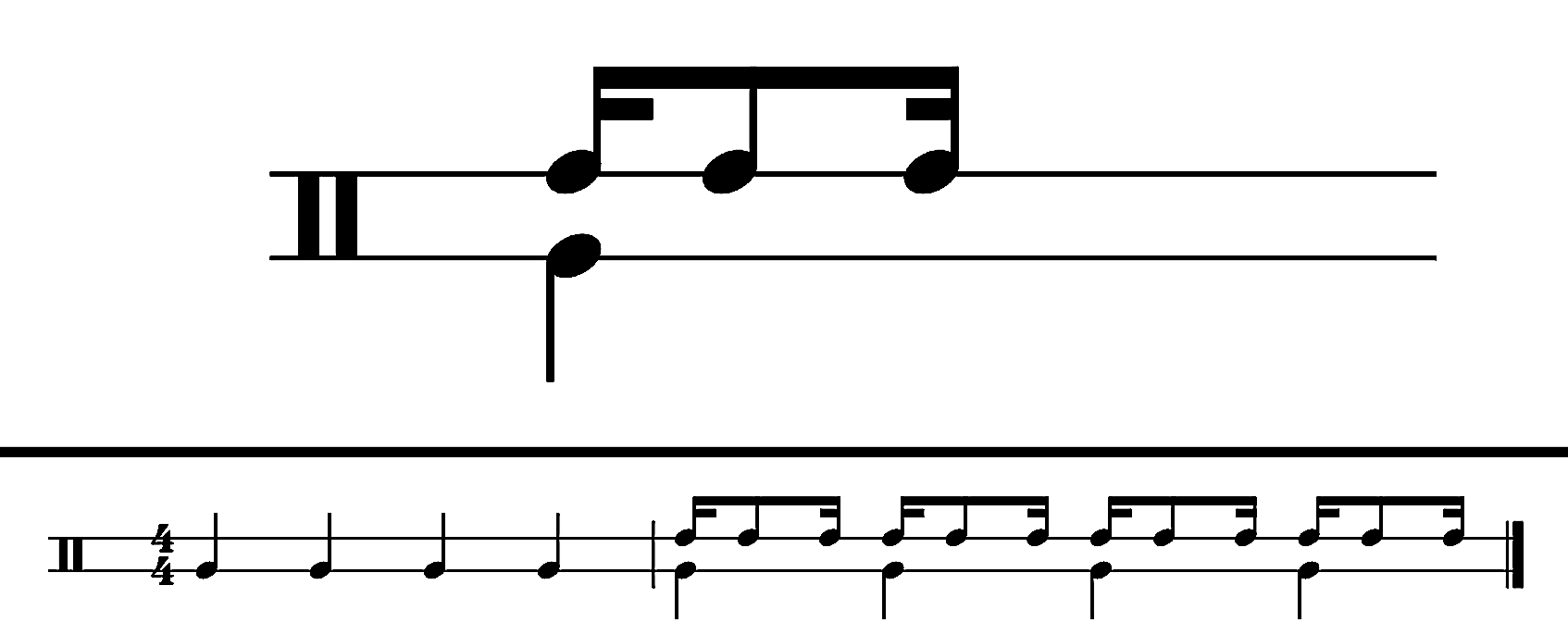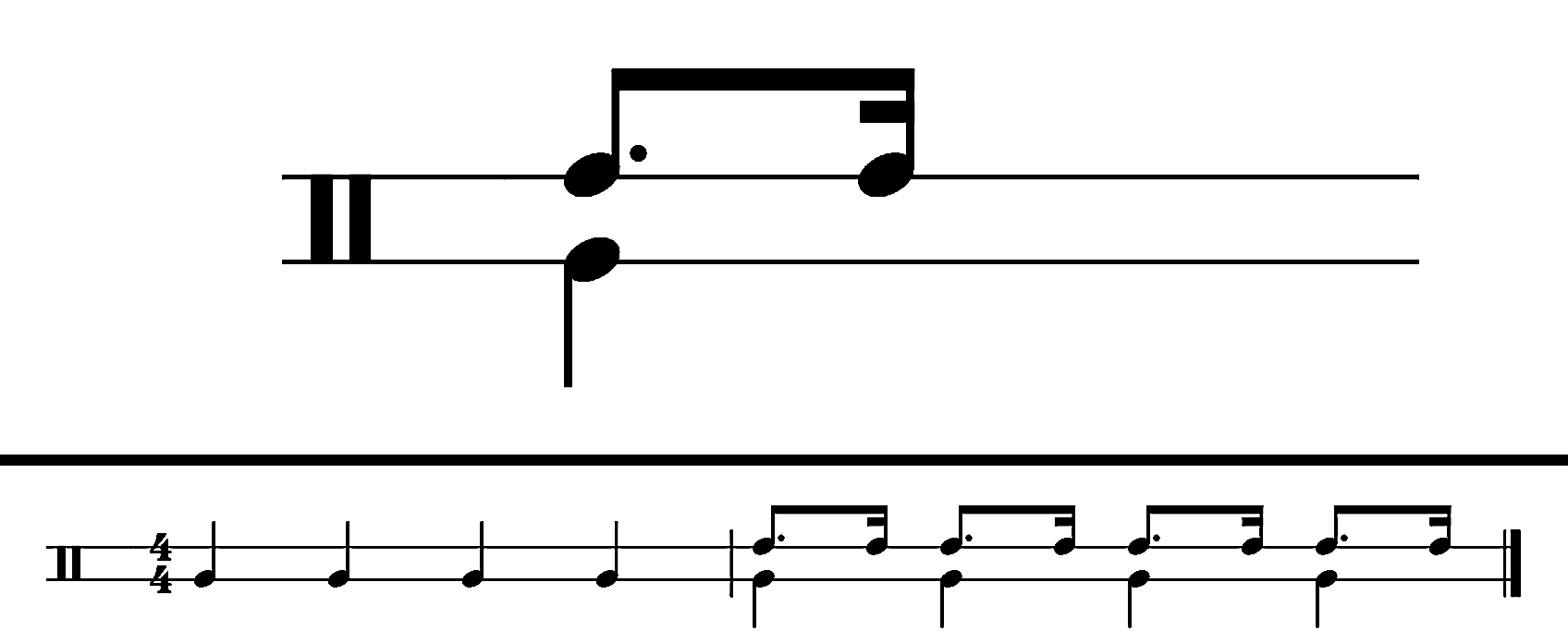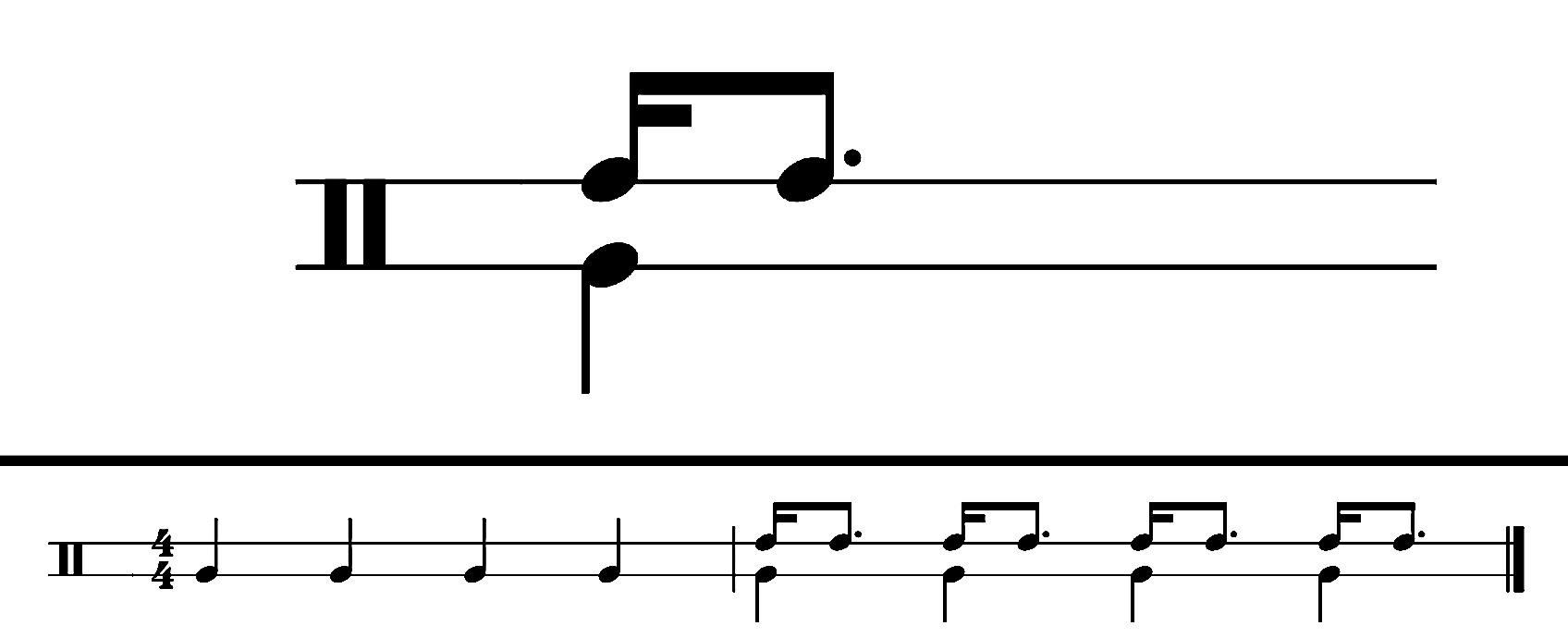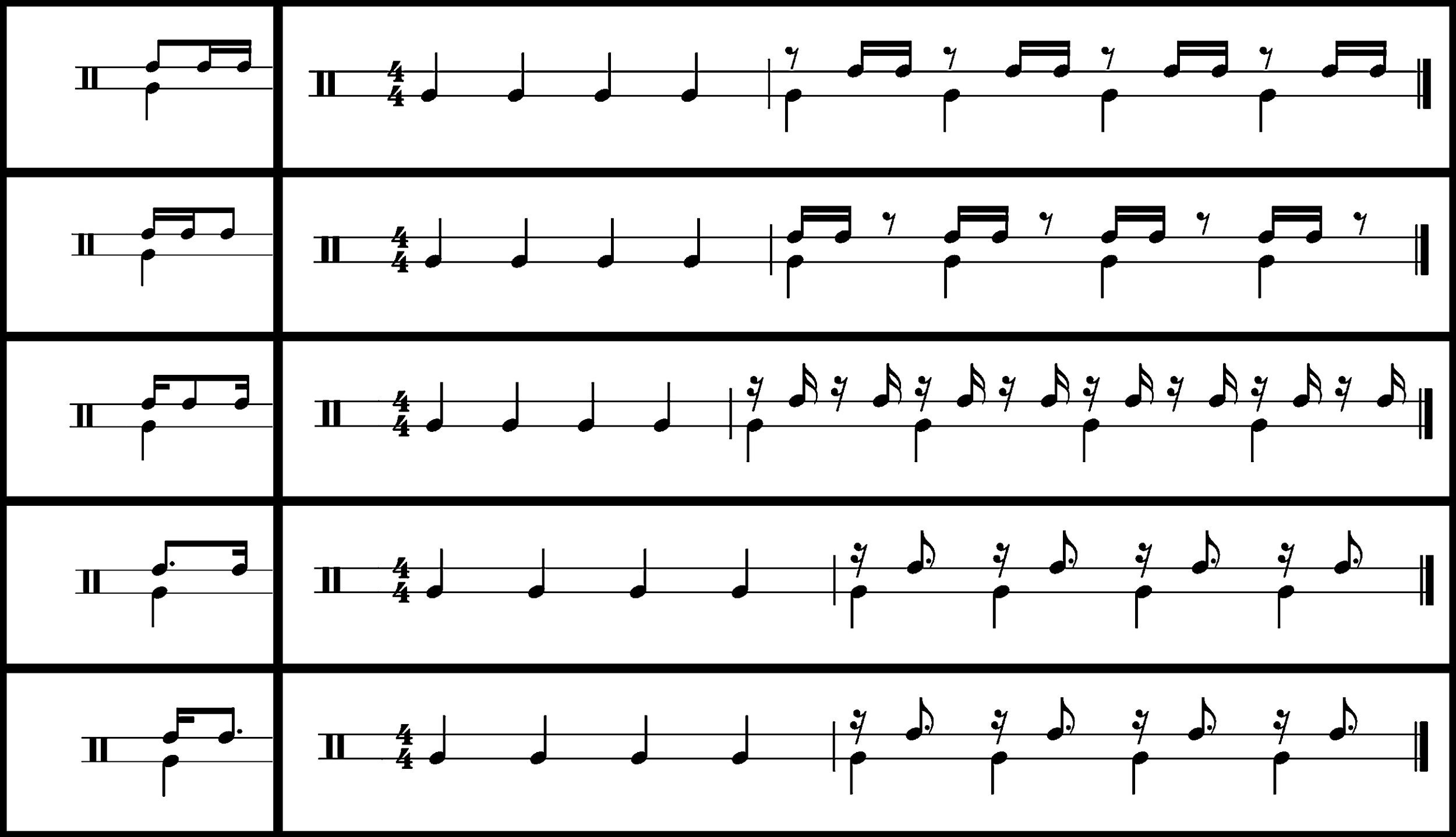10. 16th Note Patterns
More complex rhythms can be found the farther down the rhythm tree is traversed. More combinations of rhythms are possible because the pulse can be subdivided into smaller portions, and therefore more possibilities exist.
When first encountering complex 16th note rhythms in early musical studies, it is useful to first figure out all the different patterns that are possible within one pulse of 16th notes in a 4/4 simple time measure. At its most basic level, one quarter note pulse can be divided into four equal 16th notes. This is the simplest pattern of 16th notes possible because it is a rhythm that is constant and repeating.
Example of 16th Note Pattern Basic Subdivisions
From the basic subdivisions, different rhythms can be created by substituting note values from a higher level of the rhythm tree. For example, four 16th notes can be divided into two groups of two, with one group then merged into its larger 8th note value counterpart. Now two possibilities exist: 1) a pulse that consists of one 8th note followed by two 16th notes, and 2) the flip flopped version of that rhythm that consists of a pulse that begins with two 16th notes and is followed by one 8th note.
Example of 16th Note Pattern Variation 1
Example of 16th Note Pattern Variation 2
Another possible rhythmic pattern is created by separating the two sixteenth notes and placing them on the outside of the pulse, with an 8th filling up the space in the middle.
Example of 16th Note Patterns Variation 3
The rhythms shown above are developed through the merging of two 16th notes to create a longer note value of one 8th note. New grooves can be produced by merging three 8th notes and creating a dotted 8th note, which is then complemented by a sole 16th note to complete the pulse. This dotted 8th note pattern can be written with the dotted note at the start of the pulse, or can be flip flopped so that the dotted rhythm is placed at the end of the pulse.
Example of 16th Note Patterns Variation 4
Example of 16th Note Patterns Variation 5
Note values and rest values are interchangeable, of course, and add a further element to the sounds that are possible with 16th note/rest rhythm patterns.
Example of note and rest values in 16th Note Patterns
Once familiar with the basic 16th note rhythmic pattern and its derivative variations, reading combinations of rhythms in multi-measure excerpts is more easily achieved.
Example of 16th Note Patterns combinations
Check out the excerpts below, taken from a wide variety of musical styles, as examples that make use of 16th note rhythmic patterns to create rhythmic variety:
excerpt from Main Theme of The Mandalorian (2019 - 2020)
excerpt from BEYONCÉ “Countdown”
Excerpt from “Chale Chale” from Lagaan: Once Upon a Time in India
Breaking down the possibilities of rhythmic combinations and practicing counting those rhythms in isolation can help prepare the musician for effective music sight reading. Through the study of the foundational subdivisions within pulses, rhythmic patterns that are found in a wide variety of musical styles around the world can be more easily recognized and reproduced.
